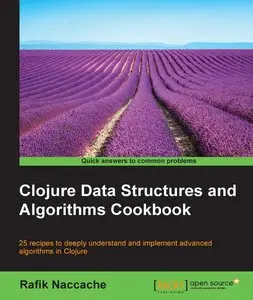Clojure Data Structures and Algorithms Cookbook by Rafik Naccache
English | 23 Aug. 2015 | ISBN: 1785281453 | 216 Pages | EPUB/MOBI/PDF (True) | 7.44 MB
With: Code Files
English | 23 Aug. 2015 | ISBN: 1785281453 | 216 Pages | EPUB/MOBI/PDF (True) | 7.44 MB
With: Code Files
This book is for intermediate Clojure developers who can read and write in this language quite comfortably. Besides, it is assumed that you have some knowledge of how to set up Clojure projects, include dependencies, how to run REPLs, and so on through Leiningen and Figwheel. No prior awareness of any of the algorithms covered in this book is needed, and, when appropriate, pointers are given to the explanation material about any theory related to them.
25 recipes to deeply understand and implement advanced algorithms in Clojure
About This Book
Explore various advanced algorithms and learn how they are used to address many real-world computing challenges
Construct elegant solutions using impressive techniques including zippers, parsing, and pattern matching
Solve complex problems by adopting innovative approaches such as logic or asynchronous programming
What You Will Learn
Explore alternative uses of classical data structures such as arrays and linked lists
Explore advanced machine learning and optimization techniques
Utilize the Clojure libraries, such as Instaparse for parsing, core.match for pattern matching, clojure.zip for zippers, and clojure.matrix for matrix operations
Learn logic programming through the core.logic library
Master asynchronous programming using the core.async library
Observe transducers while resolving real-world use cases
In Detail
Clojure is a highly pragmatic language with efficient and easy data manipulation capabilities. This provides us with an opportunity to easily explore many challenging and varied algorithmic topics, while using some extremely creative methods.
In this book, we'll discover alternative uses for classical data structures (arrays, linked lists, and trees), cover some machine learning and optimization techniques, and even delve into some innovative ways of approaching algorithmic problem solving, such as logic programming, asynchronous programming or the usage of advanced functional constructs, namely transducers or the continuation passing style.



